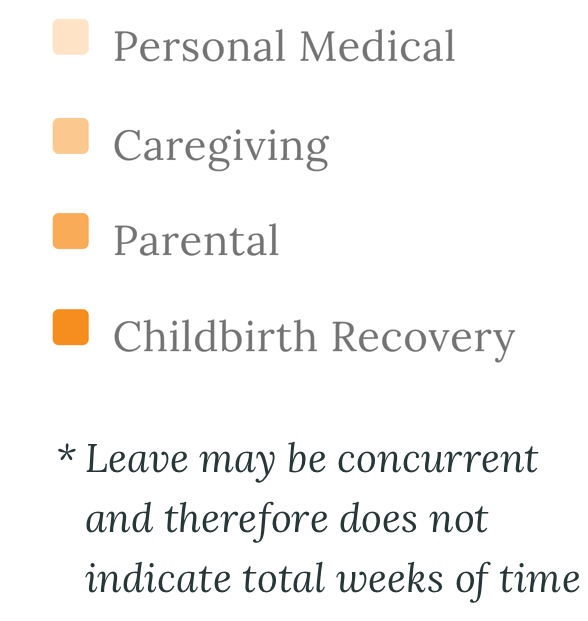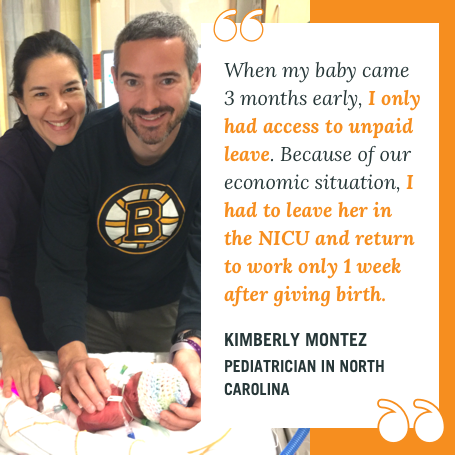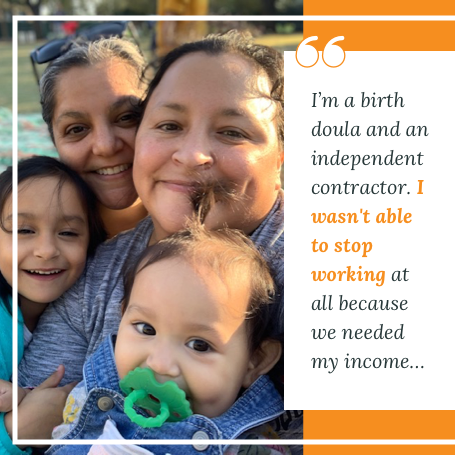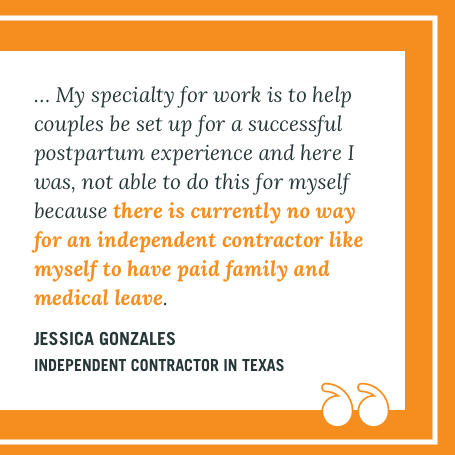In 2019, paid family and medical leave (PFML) policies were more popular than ever at the nation’s top employers. But this expansion was primarily contained to white-collar jobs and access to comprehensive policy varies greatly sector by sector, highlighting the need for federal policy.
Table of Contents
MOMENTUM 
Paid family and medical leave momentum in the private sector shows no sign of slowing.
- Caregiving leave is on the rise (see graph)
- More dads and adoptive parents have equal access to parental leave than ever before
- Among 62 employers, 13 announced new or expanded policies in 2019, benefiting an estimated 2.4 million working people
2019 showed a wave of expansion of benefits across the private sector. Among employers PL+US has historically tracked:
- A growing number of companies are expanding their policies to address the caregiving crisis. 27% of employers provide paid caregiving leave to some portion of their employees, up from 16% last year.
- Moms, dads, and adoptive parents increasingly have equal access to parental leave. 74% of employers provide equal access to parental leave for all new parents, which is up from 72% last year. Discriminatory policies remain at roughly 10% of companies. These policies are unequal because they draw a distinction between “primary” versus “secondary” parents. To learn more about “primary” versus “secondary” please see our FAQ.
- Approximately 2.4 million working people gained new or expanded access to paid family and medical leave through their employer. The companies that expanded their policies include Apple, Boeing, Citigroup, GE, Hilton, H&M, HP Enterprise, JPMorgan Chase, Kohl's, Marriott, Target, Walgreens, and Walt Disney Company.
SECTOR BY SECTOR 
Some sectors are leading the pack, others are lagging.
- Sectors leading in expanding access to PFML: Financial Activities and Professional & Business Services
- Sectors lagging in providing access to PFML: Trade, Transportation, Utilities (TTU), and Education & Health Services
Average Weeks of Leave by Sector

|
On desktop, click the graph to interact.
On mobile, click here to see the full graph.
On mobile, click here to see the full graph.
The wave of private sector movement has been led by some sectors, leaving others behind.
- Leading: Professional & Business Services and Financial Activities have the overall strongest policies in terms of length of leave, consistency of leave across employee categories (full-time, part-time, hourly, etc), and providing parental, caregiving, and medical leave. Examples include: Bank of America, CitiGroup, Apple, and IBM
- Lagging: Trade, Transportation, Utilities, and Education & Health Services. Teachers, doctors, and truck drivers are least likely to have access to any form of paid family and medical leave. Examples include: Aramark, Ascension Health, FedEx, UPS, and University of Phoenix
ACCESS 
Women, people of color, and low-wage working people are being left behind by the private sector momentum.
- Women are the dominant workforce in education and health services, two of the sectors offering the least access to PFML
- People of color makeup over a quarter of the workforce in transportation and utilities, two of the sectors offering the least access to PFML
- Minimum wage earners makeup over half of the workforce in leisure and hospitality, two sectors with limited access to PFML
Communities who need paid family and medical leave the most are in jobs that are least likely to have it.


WORKFORCE NEEDS 
Current employer, state, and federal policies are not meeting the needs of self-employed people, and a growing contract workforce.
- 9.5 million people are self-employed with little access to PFML
- Independent contractors are ineligible for the Family and Medical Leave Act (FMLA), resulting in a lack of access to both paid and unpaid leave.
- While some state programs are designed to include independent contractors, administrative and bureaucratic hurdles often prevent access to this benefit.




Employer, state, and federal policies have not kept pace with the needs of the growing modern workforce.
- The 9.5 million4 self-employed people in the US represent one of the largest and growing segments of the US economy. Yet, they have little access to PFML because they don’t receive this benefit through a traditional employer.
- Independent contractors are ineligible for FMLA, the benefit that provides 12 weeks of job-protected unpaid leave. As a result, a large and growing portion of the workforce does not have even basic workplace protections for a family or life event.
- Administrative and bureaucratic hurdles prevent independent contractors from taking advantage of state programs. Even though some state programs offer an opportunity to “opt-in” to coverage for paid family and medical leave, contractors are 1) broadly unaware of the program and the benefits they may be entitled to; 2) face bureaucratic, administrative, and cost hurdles in accessing these benefits.5
PUBLIC POLICY 
Employers are increasingly signaling support for a national paid family and medical leave policy.
- Increasingly top employers are joining investors, small business leaders, and employees alike in supporting federal policy.
- Employers who support federal policy are representative of a majority of the largest employment sectors in the US economy including Education and Health Services, Professional and Business Services, Manufacturing, Financial Activities and Trade, Transportation and Utilities.
2019 showed an increase in employers supporting a federal PFML policy.
- Support for public policy among employers increased from 8 companies in 2018 to 11 companies in 2019.
- Supporters of public policy include CVS Health, Deloitte, GE, IBM, JPMorgan Chase, Levi Strauss, Microsoft, Nike, Walgreens, Wells Fargo, and Xerox representing key employment supersectors including Education and Health Services, Professional and Business Services, Manufacturing, Financial Activities and Trade, and Transportation and Utilities.
TAKE ACTION 
PL+US is partnering with working people across the country to improve employer policies and expand access to paid family and medical leave for millions.
BE A CHANGEMAKER
Download resources and advocate for better paid family and medical leave policies at your workplace.
PRESS INQUIRIES
For media requests, please email press@paidleave.us and a member of our team will be in touch.
QUESTIONS?
- See the full paid family and medical leave data here
- Find the FAQ here
- Notes on data presented:
- The term people of color is defined as non-white, which the Bureau of Labor Statistics categorizes as Black or African American, Asian, and Hispanic or Latino.
- Trends are specific to the employers with confirmed PFML data.
- If you work for an employer included in this report, and want to reach our campaigns team, please email campaigns@paidleave.us.











